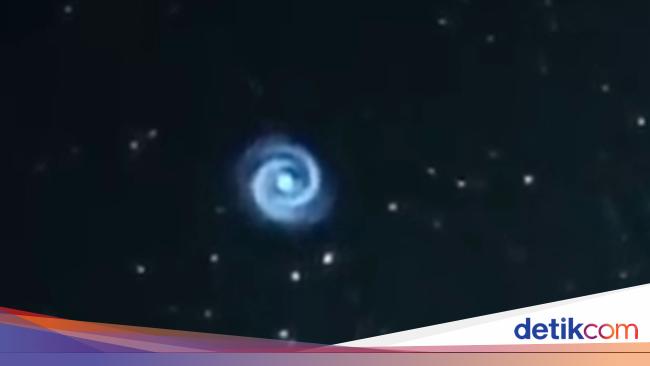Jakarta –
There are various kinds celestial phenomenon which will occur throughout December this year. This lunar sky phenomenon is related to the phases of the Moon and the meteor shower phenomenon.
To find out more about the celestial phenomena that will occur throughout December 2023, see the complete list of phenomena and when they will occur below:
Reported by the site Southern Sky, there are several celestial phenomena related to the phases of the Moon that occur this December. Here’s the list Moon phenomena in December 2023 and estimated time of occurrence:
- December 5, 2023: Final Nephew Month
The moon rises at midnight and sets at noon. The moon is visible from midnight until dawn. - December 5, 2023: Moon at Apogee
The moon is at its farthest point from Earth at a distance of 404,346 km. - December 13, 2023: New Moon
At this time, the Moon rises almost at the same time as the Sun rises. Observers can enjoy the planets without the interference of Moonlight. The sky would be dark without the light of the Moon. This is a great time to do Deep Sky or Milky Way astrophotography. - December 17, 2023: Moon at Perigee
The moon reaches its closest distance to Earth, namely 367,901 km. - December 20, 2023: Early New Moon
The Moon will be visible from sunset until midnight when the Moon sets. Sky watchers can enjoy a moon-free sky from midnight until early morning. - December 27, 2023: Full Moon
The moon will be above the horizon from sunset until dawn. Good opportunity to observe the Moon and its craters. After the full moon phase, the Moon will slowly shift its rising time to night.
In addition to the Moon phenomenon, according to the site Southern SkyThere are some meteor shower phenomenon which happened this December. Here’s a phenomenon meteor shower in December 2023 and estimated time of occurrence:
- December 2, 2023: Phoenicid Meteor ShowerTaking place on November 28-December 9, the Phoenicid meteor shower will peak on December 2. The meteor shower that appears to emerge from the Phoenix constellation has a varying hourly meteor rate when it reaches its maximum. Observers can observe about 12 meteors per hour during peak meteor shower nights.
The Phoenicid meteor shower originates from the debris of comet D/1819 W1 (Blanpain) and can be observed from sunset until around 02.44 WIB. The best time to observe the peak of the Phoenicid meteor shower is 20.00 WIB, when the meteor’s direction point is at the highest point in the sky.
- December 7, 2023: Puppid-Velids Meteor ShowerTaking place from December 1-15, the Puppid-Velids meteor shower will peak on December 7. Meteor showers appear to appear from the Puppis constellation. When it reaches its maximum, this meteor shower has a rate of 10 meteors per hour.
The Puppid-Velids meteor shower can only be observed after the Puppis constellation, which is the radiant for this meteor shower, rises at 20.27 WIB and can be observed until dawn.
The best time to observe the peak of the Puppid-Velids meteor shower is 03.00 WIB, when the meteor’s direction point is at the highest point in the sky. The moon that has just passed its final neap phase rises at midnight.
- December 21-22 2023: Ursid Meteor ShowerThe Ursid meteor shower, which will take place from December 13-24, will appear to come from the constellation Ursa Minor. Only observers in the Northern Hemisphere or above the equator can see the trajectory of the Ursid meteor.
The constellation Ursa Minor will rise after midnight for observers in the Northern Hemisphere. For observers in the Southern Hemisphere, Ursa Minor rises almost at the same time as the Sun rises. So, the Ursid meteor shower will not be observed by observers who live below the equator.
The peak of the Ursid meteor shower will occur on December 21-22 2023 and meteors passing through the sky will move at a speed of 33 km/hour. When it reaches maximum intensity, observers can only see 10 meteors per hour from the remainder of comet 8P/Tuttle that passes by Earth.
The Ursid meteor shower rose at 04.15 WIB from Bandung. But for Indonesian observers in the Northern Hemisphere or north of the equator such as in Banda Aceh, this meteor shower can begin to be observed from 01.20 WIB
(wia/idn)
2023-12-03 06:53:29
#Sky #Phenomena #December #Moon #Phases #Meteor #Showers


